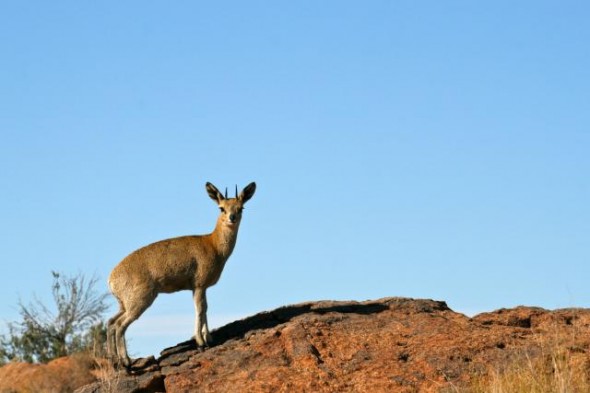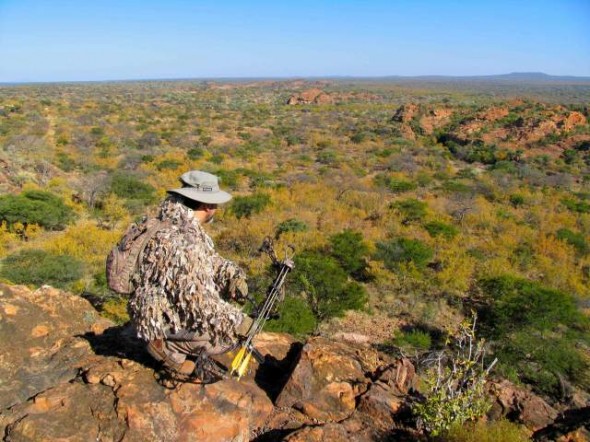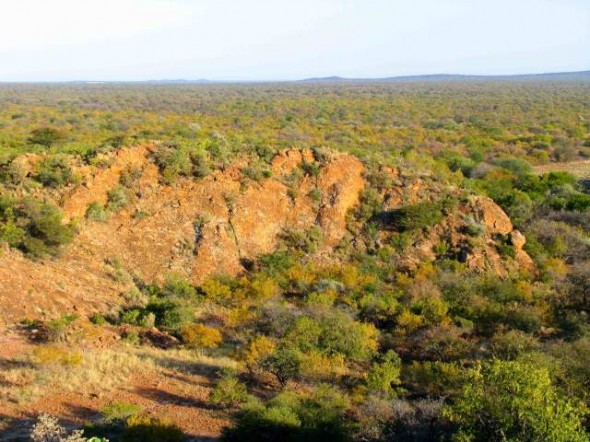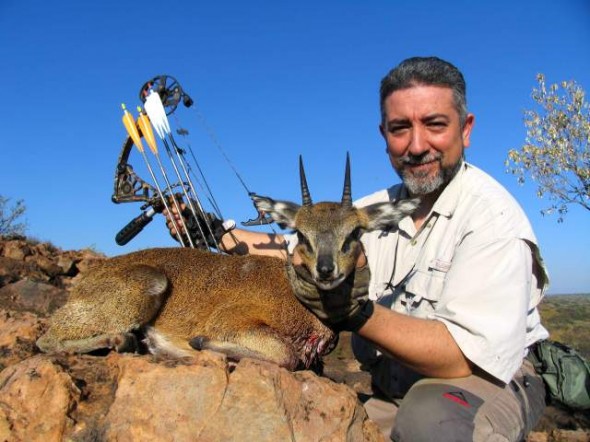Hunting Klipsringer: The Lord of Rocks
Adventurous Bowhunter 04.16.13
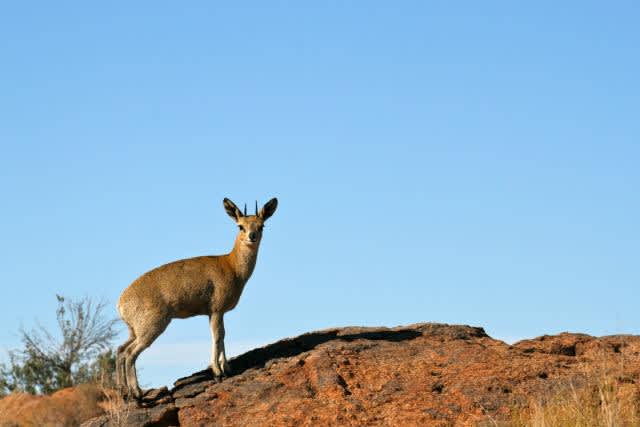
This is the story of a very special safari. The pursuit of a coveted trophy finally obtained through the diligence and skill of a good friend.
In late April I returned to Africa with the intention of bringing down a Klipspringer. Who would have told me that I would take a seat in the very last IB6051 from Madrid to Johannesburg. In a plane filled to bursting point, I finally reached my destination. From there I took a domestic flight to Polokwane, my final destination in the Limpopo Province.
At the airport waiting for me was my friend Luis Diez and Tabengwa. An eternal smile, deep eyes, and several tribal scars make up the face of this exceptional tracker from Old Days Safaris, with whom I have the pleasure of sharing hunting days in the last few years.
“Hi Moses. Is everything okay? Today is going be a bloody day!” he said laughing.
This is their way of wishing me luck. We climbed in the Toyota and headed for the “koppies,” the name used to describe small rocky hills that dot the savanna here and there. They are home to klipspringer, dassies, and of course, leopard.
On a sandy track, about five kilometers from our destination we left Tabengwa at the vehicle. We would not see him till later in the morning, when the sun beats down hard on the sandstone ledges, forcing every living creature, human or animal, to seek shelter under the shade. Moving in silence, following the footsteps of Luis Jnr, my professional hunter, who moves like a fish in water through the sea of thorny acacias and mopane trees that separate us from our first objective, a group of five small koppies in the shape of a “U” where we have previously spotted klipspringers.
We started the climb with caution, avoiding stepping on loose rocks that may roll and alert animals of our presence. We peeked over the summit ever so carefully but this time we were unlucky, nothing but silence. Luis threw stones at the trees below us to see if something was lying in the shade. Only a hornbill flew up alarmed. We climbed down and made our way back over all the koppies again with the hopes of locating some animal bedding down, which would allow us to creep close enough for a shot.
The first hour-and-a-half passed by unnoticed. We climbed a koppie that was somewhat higher than the others. From here we could see a small rocky hill, which gradually descended. At the foot of the hill several hundred feet away, a herd of impala were drinking at a ground dam. To our left, on a rocky ledge, there was a group of dassies. They were lying on the rocks basking in the sun.
“Try one,” Luis approached me and said.
“Which one?” I replied.
“The one on the left.”
To the left of the group, I could see a dassie that stood out from the rest in both size and colour. The dassie lay on a large slab of rock. I ranged the distance: 45 meters separated us from them, my maximum shooting distance. Luis urged me to try it. This was a matter of trust; he wanted to know if I would be able to take the chance if a klipspringer presented itself. Before going to bed I had repaired the damaged scope with adhesive tape, fixing a nail in place of the damaged screw. The following morning I tested the bow at the shooting range without problems up to 30 meters, but 45 meters at a steep angle was something else. In short I had to try, so without thinking twice I pulled the string, aimed gently, and let the arrow fly. I saw the bright blue feathers impacting behind the shoulder.
“Perfect shot, Moses!”
Shortly after taking some pictures, we climbed another koppie where Luis assured me we would find a couple of klipspringers. We see the two animals feeding below us, for a long time we thought about how we could stalk closer but the place where they were was very difficult to approach, so we decided to relax and enjoy watching their movements between the steep cliffs while preparing the strategy for the following day.
The morning was very windy, with some clouds but no rain. Before 5 am we were in the Toyota on the way to the koppies. We again left Tabengwa at the Toyota and continued on foot. The sun was beginning to creep over the horizon when we reached the top of the Koppie where we had seen the klipspringers the previous day. We made no noise, peeking over the edge we could see one klipspringer. It was a female and took off as soon as it saw us, once it was a safe distance away she stopped and made her alarm call. Immediately the male appeared at the same spot where the female had been standing.
I must confess that the sudden appearance of the ram caught us by surprise. I immediately nocked an arrow and drew the bow without ranging the distance or taking the steepness into account. The first arrow flew five feet above the head of the klipspringer, who still had no idea what was happening. It was then that I ranged the distance. The animal stopped on a large rock 68 meters away, but the angle was so steep that the actual distance separating us was only 42 meters. Hastily I knocked a second arrow and shot again. This time the arrow impacted underneath him. The element of surprise was lost.
The klipspringer started jumping from rock to rock, speeding away through the bushes surrounding the base of the koppie were we were. Then Luis blew his little whistle that he had just pulled out of his pocket. The animal stopped immediately and retraced his steps. I nocked a third arrow. I aimed at the klipspringer, which was still coming closer; finally he stopped on a large rock and stared at us. I let the arrow fly and it flew directly towards its target. The klipspringer ran into the thicket disappearing behind the bushes. The release had been so fast that I wasn’t sure what had happened. I thought the arrow had nicked the klipspringer’s neck before falling onto the ground. Luis looked through his binoculars repeatedly, while I tried to nock another arrow on the bow.
“Moses, look through your binoculars!” Luis exclaimed. “Look at the sand beneath the rock where it stood.”
“That’s a lot of blood, right?” I asked.
“Yes, and there is an even bigger puddle a little higher up.”
It took well over 20 minutes until my nerves calmed down and we decided to climb down. When we arrived at the spot where the shot was taken, we saw numerous blood drops, the shot could have been much better than what I had originally thought. Luis followed the blood past the tree behind which the klipspringer had disappeared, it lay a few meters further. He lay on his left shoulder seeming to rest peacefully awaiting our arrival. The embrace with Luis will be something I won’t ever forget. Together we had defeated the “lord of the rocks.”
This article originally appeared on The Adventurous Bowhunter and is republished with permission.


